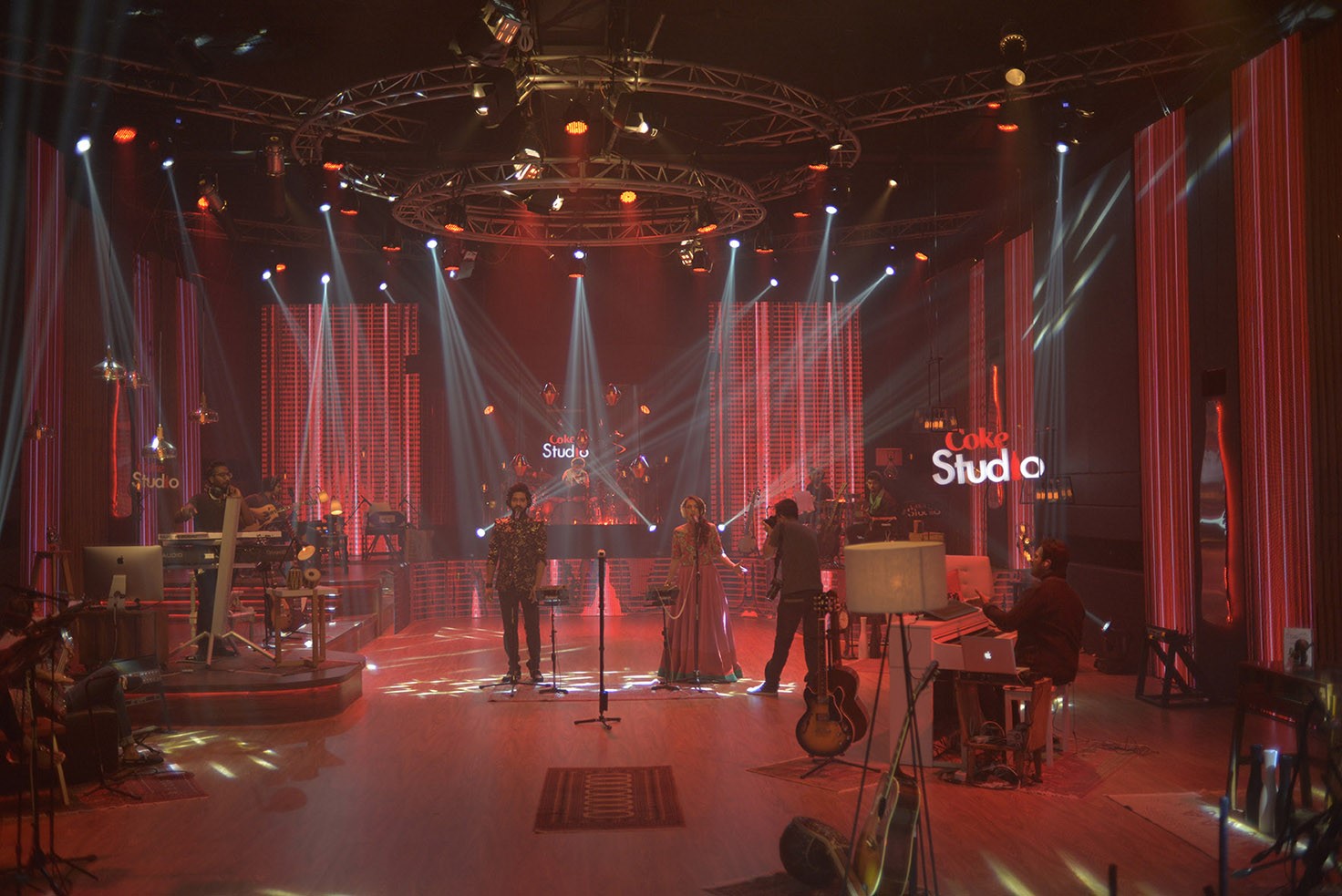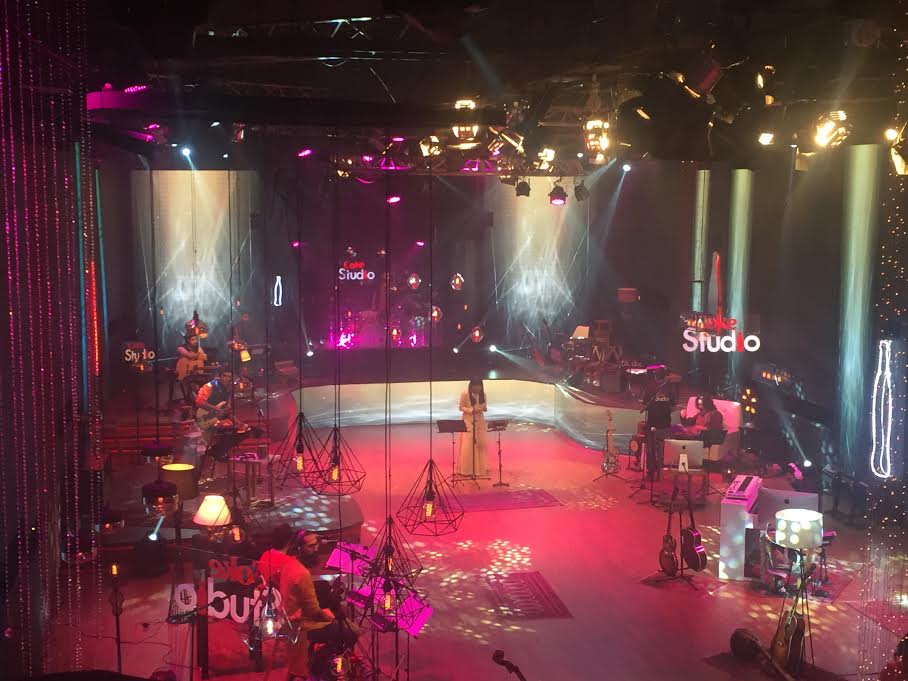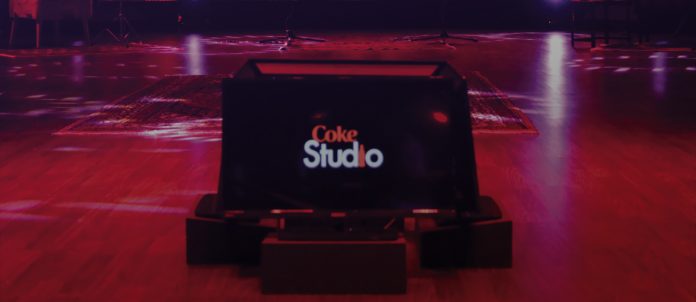In times of a country’s downturn, ‘arts’ tend to get severely overlooked. Considered a luxury rather than a necessity, arts have always relied on the support of patrons who promote them. In past eras, rulers and kings endorsed artists in their courts and in today’s world, corporations and brands are doing the same to advocate arts.
Carrying that same vein, Coca-Cola Pakistan launched Coke Studio, a show that brought together artists to collaborate and create mostly fusion music, recording live sessions in a studio setup, to support the music industry in the country. No one could have predicted the show’s phenomenal success back then.

COKE STUDIO’S EVOLUTION AS A PLATFORM
Working for music and the development of this sector of entertainment in the country consistently for the past 10 years, Coke Studio is currently the biggest platform in Pakistan, unbeatable in its reach to date and surpassing the popularity of other, similar platforms by huge margins. A benchmark for music produced in the country, Coke Studio has produced numbers showcasing the best of Pakistan’s music by new talent as well as established singers and musicians, in the space of a decade. The show’s unparalleled success has encouraged artists, who have appeared on it, to continue to work and produce more music, whereas the competition created has urged other brands to invest in music, which is rewarding for all involved. In the past 10 years since it started, Coke Studio has changed in many ways and has been continuously evolving, in response to audience reactions. Apart from creating standards for itself, the show’s success has brought about a certain set of parameters, with a distinctly defined sound. While artists and music directors continue to experiment, the show has become quite refined and organized, with everyone; from producers to musicians to singers, knowing the directions that they can take to deliver according to what audiences expect from Coke Studio.
Adding multiple music directors in season 9 was an experiment which clicked with the audience; hence the format was made to continue through season 10 as well. Every music director brings their own approach of making and interpreting music, adding a whole new stylistic dimension to the show. Besides this, other elements which have been added through the 10 seasons include more orchestration, detailed and in-depth arrangements using different musical instruments, more film music being featured and a wider variety of musicians performing on the show.
“The show produces an average of 30 songs per season, which is about 250-300 songs in 10 years, meaning 30 albums worth of music. That is a huge accomplishment and pulling off something like that takes focus and a lot of commitment”, said Omran Shafique, who has been part of Coke Studio since its inception, before the start of Season 10. “A lot of work has gone into this season too, which will hopefully come across. We’re making all this music for people out there to enjoy and have fun with; and that’s the approach we’ve taken this year.”
TRIBUTES FEATURED IN SEASON 10
Completing a decade is a big milestone for a show like Coke Studio and to celebrate the landmark achievement, Season 10 paid tributes to 7 icons of the music industry of Pakistan correlating to the 7 decades of independence.
The 7 icons chosen are legendary artists who gave us a national and cultural heritage by contributing greatly to our music and poetry and laid the groundwork for Pakistan’s burgeoning musical talent. These stalwarts included Mehdi Hasan, Madam Noor Jehan, Master Inayat Hussain, Nusrat Fateh Ali Khan, Ustad Bade Ghulam Ali Khan, Pakistan’s most beloved poet, Faiz Ahmed Faiz, and last but not the least, Pakistan’s darling pop star turned spiritual icon and ardent philanthropist, Junaid Jamshed.
Episode 1: Featured Ali Sethi singing Shahanshah-e-Ghazal, Mehdi Hasan’s ‘Ranjish hi Sahi’.
Episode 2: Ali Zafar performed ‘Jaan-e-Bahaaraan’ composed by the renowned music composer, Master Inayat Hussain.
Episode 3: Humera Channa and Nabeel Shaukat collaborated for ‘Mujh Se Pehli Si Muhabbat’ originally performed by Malika-e-Tarannum, Madam Noor Jehan.
Episode 4: Javed Bashir and Akbar Ali perform on the complex thumri ‘Naina Moray’ sung by Ustad Bade Ghulam Ali Khan.
Episode 5: Shafqat Amanat Ali Khan sings Faiz’s famous poem ‘Bol’.
Episode 6: Jabar Abbas and Umair Jaswal belt out an energetic rendition of ‘Dam Mast Qalandar’ to pay homage to Nusrat Fateh Ali Khan.
Season Finale: The finale featured Ali Hamza and Ali Zafar’s collaborating with the dynamic duo Strings on the song ‘Us Rah Par’, originally sung by Junaid Jamshed.

Each one of these performances made us and the growing following of the show nostalgic of eras that have repeatedly been romanticized. It reminds us of our rich history, and how it continues to shape the personality and character of our current generations of musicians.
Coke Studio continues to break barriers and is reaching more audiences than ever before with music from the show becoming intertwined with Pakistan’s identity to the point that the influence it has had on our local music industry is incomparable.














